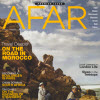My Smithsonian pal Beth Py-Lieberman hipped me to a piece from Time magazine about Demand Media, which is a “content farm” that uses the Web’s most popular search terms to decide which topics to cover (hence “demand”). The company’s thousands of freelance writers–many of them newly unemployed, top-notch journalists–are paid just pennies per word to crank out articles such as “How to remove dents in a hair dryer” and “How do I donate a car in Dallas?” Editing and fact-checking are minimal. The pieces end up on Demand Media’s popular sites eHow.com and Livestrong.com, as well as in print outlets such as the Atlanta Journal-Constitution. Demand is valued at $1.3 billion.
The Time piece got me thinking about the debate over farmed vs wild-caught fish, and how journalism/content production seems to be in a similar fix: Sure, the farmed stuff meets the market demand, but it’s less tasty, less nutritious, more likely to be tainted, and may threaten wild stock. What happens to “wild-caught” journalism–investigative stories and unexpected, richly reported narratives that take months of research and dedicated work by writer, editors, and fact-checkers–when farmed content floods the market?
Take NYU’s nominees for The Top Ten Works of Journalism of the Decade. These stories, many of which you’ll recognize as news-breaking and ground-shaking, are the result of curiosity, dedication, and independent thinking. The topics they cover may end up among popular search terms, but they didn’t start out that way. And many of the news organizations that published these stories are struggling to survive.
What do you think? Does farmed content threaten wild-caught journalism? Or is there room for both?



